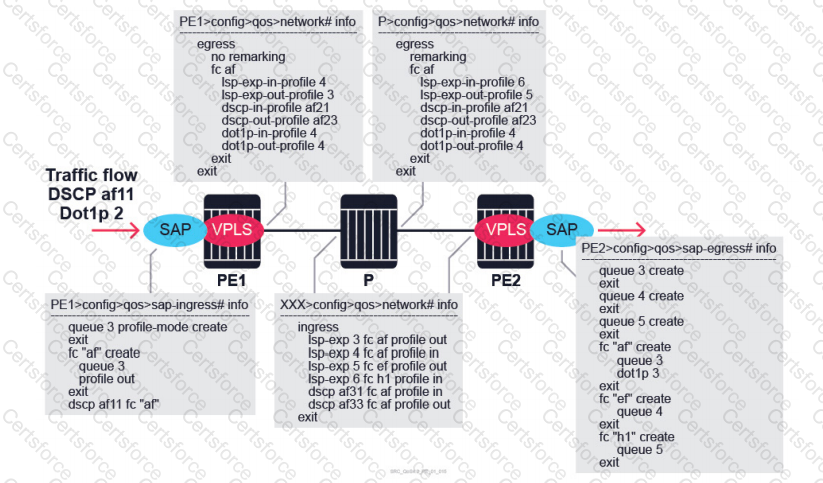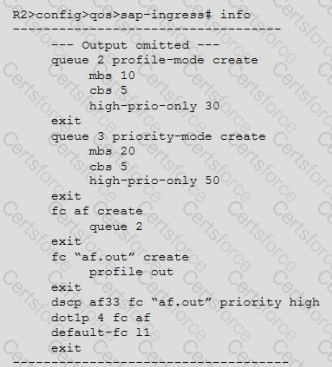Which of the following self-generated traffic applications is considered “protocol” traffic, as opposed to “management” traffic?
In which of the following scenarios is the egress port scheduler useful? (Choose two)
Which of the following are examples of metrics for QoS?
Which of the following about scheduling is TRUE?
Packets arrive at the VPLS SAP on PE1 with DSCP marking of af11 and Dot1p of 2. According to the QoS policies applied at routers PE1, P, and PE2, what is the DSCP value of packets egressing router PE2? (All the SDPs are MPLS-encapsulated, and all interfaces are using their default trust states).


According to the SAP-ingress QoS policy shown, what is the maximum amount of memory that queue 5 can use from the shared buffer pool?
Individual application streams are considered microflows, whereas __________ are considered macroflows.
Which of the following BEST describes a SAP when regarding QoS?
According to the SAP-ingress QoS policy shown, which packets have a higher priority to enter queue 2?

Real-time rate limiting on the service ingress is a feature that performs_____________. Traffic above the defined PIR is ______________.